Antitubercular Agents : Reserve drugs
| Home | | Medicinal Chemistry |Chapter: Medicinal Chemistry : Antitubercular Agents
Reserve drugs : i. Ethionamide (Tridocin) ii. Para-amino-salicylic acid (PAS, Tubacin) iii. Amikacin iv. Thiacetazone
Antitubercular Agents - Synthesis
and Drug Profile
Reserve drugs
i. Ethionamide (Tridocin)
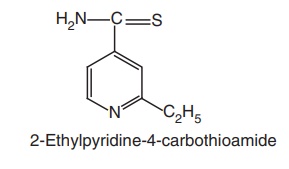
Synthesis
Route I. From: 2-Ethyl-4-cyanopyridine

Route II. From: Ethyl propionyl pyruvate
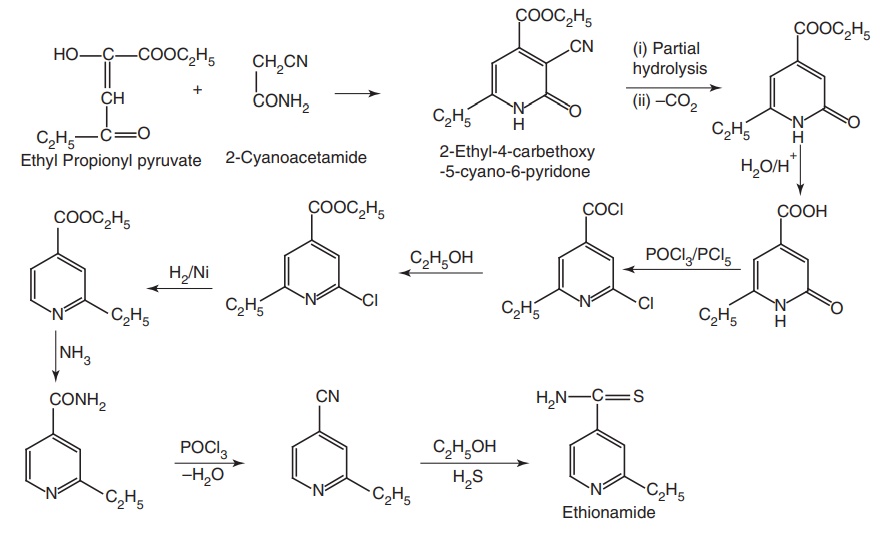
Mode of action: The antimycobacterial action of ethionamide
seems to be due to an inhibitory effect on the mycolic acid synthesis.
Metabolism: Less than 1% of the drug is excreted in the free form, and remainder
of the drug appear as six metabolites. Among the metabolites, ethionamide
sulphoxide, 2-ethyl-isonicotinamide, and the N-methylated-6-oxo-dihydropyridines are the few.
Properties and uses: Ethionamide is a yellow crystalline powder or
crystals, practically insoluble in water, soluble in methanol, and sparingly
soluble in alcohol. It is used as antitubercular drug.
Assay: Dissolve the sample in anhydrous acetic acid and titrate with
0.1 M perchloric. Determine the end point potentiometrically.
Dose: The dose to be administered is 500 mg–1 g per day in three or
four divided doses with meals.
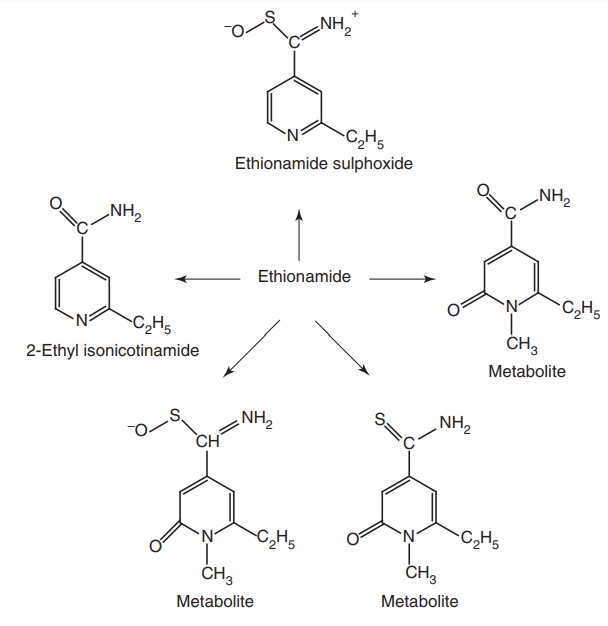
ii. Para-amino-salicylic acid (PAS, Tubacin)
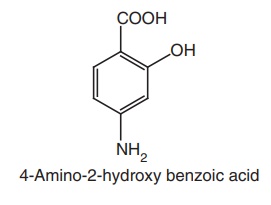
Mode of action: Aminosalicylic acid is an inhibitor of bacterial
folate metabolism in a manner similar to the sulphonamide antibacterials.
Properties and uses: Aminosalicylic acid is bacteriostatic and highly
specific for M. tuberculosis. Side
effects are anorexia, nausea, epigastric pain, diarrhoea, and making poor
compliance.
Dose: Dose administered orally 14–16 g daily after meals in three to
four divided doses.
Synthesis
Route I. From: Anthranilic acid
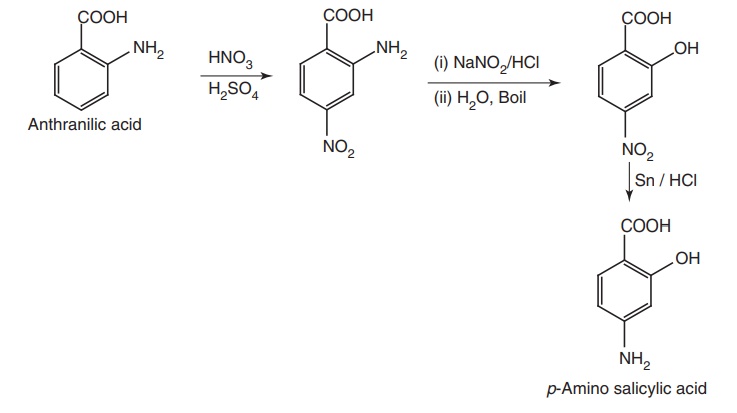
Route II. From: m-Nitrophenol

iii. Amikacin
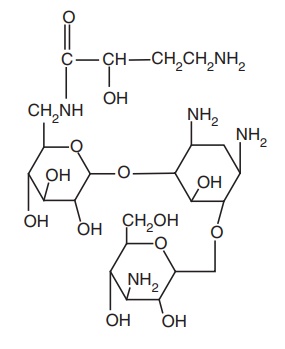
Properties and uses: Amikacin is a white powder, soluble in water,
practically insoluble in acetone and in ethanol. It is a semisynthetic
aminoglycoside that was first prepared in Japan. It is extremely active against
several mycobacterial species, and may become the drug of choice for treatment
of diseases caused by nontuberculous mycobacteria.
Assay: It is assayed by adopting liquid chromatography technique.
Dosage forms: Amikacin sulphate injection I.P., Amikacin injection B.P.
iv. Thiacetazone

Synthesis
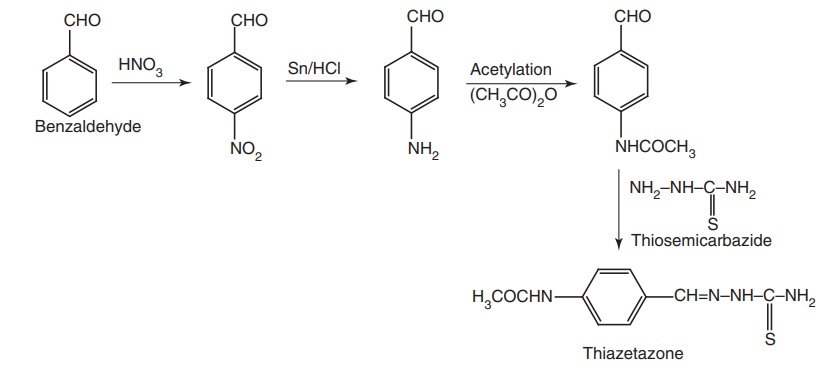
Uses: It is used as an antitubercular agent.
